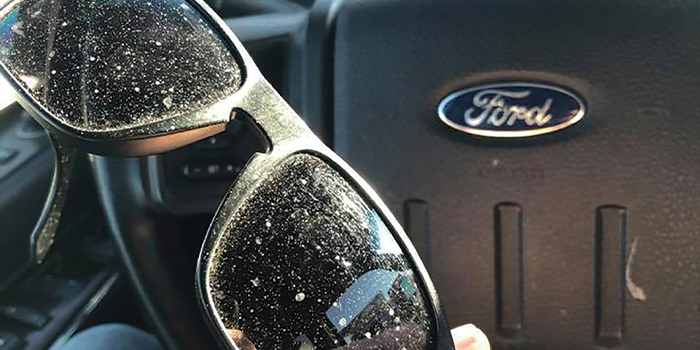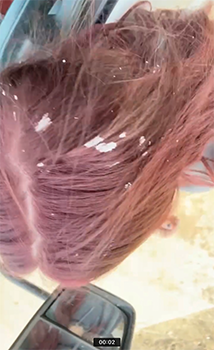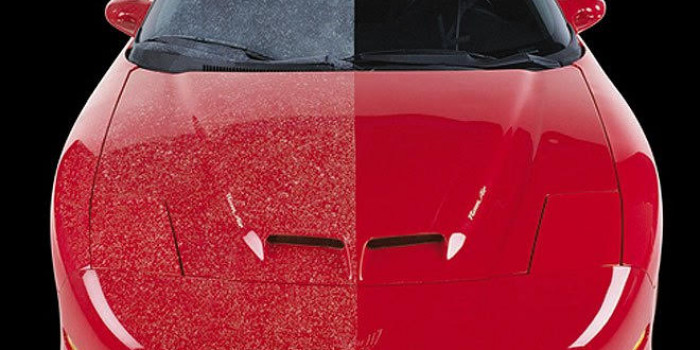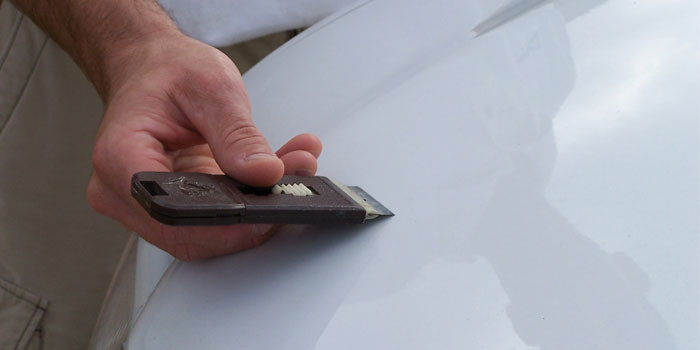
The Word that Shall Not be Spoken: Overspray

SPRAY FOAM MAGAZINE – I’m sure many of you are members of the Facebook group Spray Foam World Wide (SFWW). What’s one of the most popular questions you see at least once a week but never want to hear on the job? How do you get overspray off this? There are so many answers, and it seems like there’s a new surface and new technique each time. In this article I will list just a few of the remedies I have found in online groups, through word of mouth, and experience, so it’s all in one place. I hope you never have an overspray issue, but if you do, you should find this article as a useful place to start.
Metal
Citrus based latex paint clean-up spray and a non-scouring pad. Find the product that contains acetone and benzyl alcohol. All agreed that it worked very well. Some suggested break cleaner, but say this product was faster.
Sunlight! UV light breaks down spray foam. After a few days in the sun, small overspray particles will dissolve, and you can finish the work with a power washer. For extra help, some suggest warm-water power spray.
Depending on the amount of overspray, a common clay bar and elbow grease can take overspray off a metal surface.
Replace! If the metal is part of a door or something that can be easily replaced, this may be your best option. When you weigh the time and labor it takes to clean the surface and a disgruntled customer, it may be less expensive to replace the damaged section.
Concrete
Most say overspray and spills are not cleanable once they have soaked into the concrete and have created a stain. Best options are to give it a new surface. If you are not comfortable doing it yourself, contact a concrete resurfacing specialist to take care of it.
Wood
When overspray is on a wood surface, it’s very dependent on the surface of the wood. If it is a smooth painted or stained surface, you can use similar techniques as with metal such as a cleaner and a non-scouring pad. Another option would be to sand the surface and repaint or re-stain. If it’s a rough surface like a wood beam, the most popular suggestion was a wire brush. This could be a handheld brush, or a wheel installed on a drill. Try different types of wire brushes until you find they type and softness that works for the surface you are cleaning. Another popular suggestion was to sand blast it with dry ice, baking soda, and other specialty minerals. If re-staining is an option, this will cover up a lot of imperfections. Lastly, if possible, replacing the wood surface is a popular option to consider.
Cars
When working on commercial buildings, especially outside on roofs, overspray on cars can easily occur. Clay bar works well on the entire car, including the windows. Another option for the windows is to use a sharp disposable razor blade with water or some other type of lubricant like window cleaner. If you cannot get to the car immediately, it’s always a good idea to at least get the windows. When the sun hits the windows or when it rains and they use windshield wipers, it can make it very difficult to see when overspray covers the windows.
Hair
At least you just hit yourself and not your customer’s house. The remedies included some type of skin safe lubricant such as coconut oil, peanut butter, or just hair conditioner, a stiff fine-tooth comb like a lice comb, a hot shower and repetition. This is when rinse and repeat really comes in handy. Cutting your hair is also an option, but with patience, most feel this is not necessary.
Final Thoughts
As with all remedies, it’s wise to test an inconspicuous spot first and see how it looks before working on the entire surface. Also make sure to use the proper personal protective equipment for the chemical or power equipment you choose to use. But you know the best remedy to overspray? Protect all your surfaces, especially your body, before you begin.
For use by SprayFoamMagazine.com & Spray Foam Magazine










